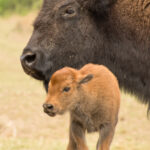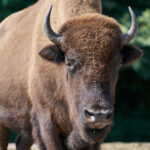Understanding Bison Economics
The Basics of Bison Economics
Bison economics refers to the study of the various factors that influence the value of bison, including supply and demand dynamics, costs of raising bison, the market value of bison products, and the cultural and historical significance of bison. By understanding these factors, one can gain insights into the overall economic value of bison and how it may fluctuate over time.
Supply and Demand for Bison
The supply and demand for bison are crucial determinants of their economic value. Bison ranchers and farmers play a key role in balancing the supply of live bison, bison meat, hide, and other bison-based products with the demand from various industries and consumers. The scarcity or abundance of bison in the market can greatly influence their price.
Determinants of Bison Prices
Several factors affect the prices of bison, whether they are live bison, bison meat, or bison hide. Factors such as the quality of the animals, their age, weight, and overall health can impact their value. Moreover, market conditions, regional differences, and even environmental factors can also contribute to the fluctuation in bison prices.
Valuing Live Bison
Price Range for Live Bison
The price range for live bison can vary significantly depending on their age, gender, and purpose. Younger bison without any specialty traits typically fall within a lower price range, while mature bison with specific traits desired for breeding or trophy hunting purposes can command higher prices. On average, the price of a live adult bison can range from $2,500 to $5,000.
Factors Affecting the Price of a Bison
Several factors determine the price of a live bison. These factors include breed, size, weight, health condition, and horn size. Bison with recognized pedigrees or superior genetics may carry higher price tags due to their potential breeding value. Additionally, bison that have undergone specialized training for activities like rodeo events or working on ranches may also command higher prices.
Regional Differences in Bison Prices
The price of live bison may vary across different regions due to factors such as transportation costs, market demand, local regulations, and the prevalence of bison farming in the area. Regions where bison farming is more common may have a larger supply, leading to more competitive prices. On the other hand, areas with limited bison populations may experience higher demand, potentially driving prices up.
Costs of Raising Bison
Initial Investment for Bison Farming
Starting a bison farm involves a significant initial investment. The costs typically include securing suitable land for grazing, erecting fencing, building shelters or barns, and purchasing the initial herd of bison. The expense of acquiring bison can vary depending on the number of animals and their age. The initial investment for starting a small-scale bison operation can range from $10,000 to $50,000.
Ongoing Costs of Bison Ranching
Once a bison farm is established, there are ongoing costs associated with raising and maintaining the herd. These costs include feed, veterinary care, labor, equipment maintenance, and land management expenses. Additionally, there may be costs related to marketing and transportation if the bison are being sold for meat or other products. The total annual costs of bison ranching can vary widely, but they can range from $500 to $2,000 per animal.
Potential Income from Bison Ranching
While the costs of raising and maintaining bison can be significant, there is also the potential for income from various sources. Bison ranchers can generate revenue from selling live bison, bison meat, bison hide, and other bison-based products. The profitability of a bison operation depends on factors such as the size of the herd, the market demand, and the operating costs. With careful planning and management, bison ranching can be a profitable venture.
Bison Meat Value
Market Size for Bison Meat
The market for bison meat has seen consistent growth in recent years. Health-conscious consumers are increasingly drawn to bison meat due to its nutritional benefits and being leaner than traditional beef. The demand for bison meat extends beyond regular consumers, with restaurants, specialty grocers, and even online platforms catering to this market niche. The expanding market size indicates a positive outlook for the value of bison meat.
Price of Bison Meat per Pound
The price of bison meat per pound can vary depending on various factors such as cut, quality, and market demand. On average, bison meat can range from $7 to $12 per pound, making it a premium-priced meat compared to beef or pork. The higher price reflects the limited supply of bison meat and the additional costs involved in bison ranching, such as feeding and caring for the animals.
Bison Meat Versus Other Meats
Bison meat offers several advantages over other meats, which contribute to its value. Firstly, it is lower in fat and cholesterol compared to beef, making it a healthier alternative. Additionally, bison meat has a distinctive flavor that appeals to those seeking a unique culinary experience. Its versatility in various cooking styles and recipes also adds to its value, attracting consumers looking for diversity in their protein choices.
Bison Hide and Products Value
Utilization of Bison Hide
Bison hides have long been valued for their durability and unique characteristics. They are utilized in various industries, including the production of clothing, accessories, and home furnishings. The natural strength and texture of bison hide make it suitable for leather goods that require durability and resistance to wear and tear. The utilization of bison hide in these industries contributes to its overall value.
Market Value of Bison Hide
The market value of bison hide can vary depending on its size, quality, and the demand from industries that utilize leather. On average, bison hides can range from $300 to $600 each. The value of bison hide is influenced by factors such as perceived quality, tanning processes used, and market demand for bison leather products.
Other Bison-based Products and their Values
In addition to hide, there are various other bison-based products that contribute to the overall value of bison. These products include bison wool, bison horns, and bison bones. Bison wool, known for its warmth and softness, can be used in the production of clothing and textiles. Bison horns have ornamental and artistic value, while bison bones can be utilized in the creation of bone crafts or for their nutritional value in bone broth. The market values of these products vary depending on demand and their specific use.
Endangered Species Value
Role of Bison in Ecosystem
Bison play a vital role in the ecosystem due to their grazing behavior and their impact on vegetation and soil health. As large herbivores, they help maintain grasslands and prevent the dominance of certain plant species, promoting biodiversity. Their activities, such as wallowing, also create habitat for other species and contribute to overall ecosystem dynamics. The ecological benefits provided by bison contribute to their value as an endangered species.
Conservation Programs and their Impact on Bison Value
Conservation programs aimed at protecting and restoring bison populations have had a significant impact on their value. By preserving their natural habitats and establishing breeding programs, these initiatives ensure the long-term survival of bison and their genetic diversity. The increased awareness and support for conservation efforts have elevated the value of bison as a symbol of conservation and natural heritage.
Value of Bison in Biodiversity
The value of bison extends beyond their individual economic worth. As a keystone species, bison have a profound impact on the overall biodiversity of an ecosystem. Their presence benefits numerous plant and animal species, allowing for a more balanced and resilient ecosystem. This ecological value adds to the intrinsic worth of bison and further emphasizes the importance of their conservation.
Cultural and Historical Value of Bison
Significance of Bison in Native American Culture
Bison holds immense cultural significance for Native American tribes. For centuries, these tribes have relied on bison for sustenance, clothing, and spiritual practices. The buffalo, as they often refer to them, represents strength, abundance, and connection to nature. The cultural value placed on bison by Native American communities adds a layer of cultural significance to their economic value.
Bison as a Symbol in American History
Bison also hold a significant place in American history, particularly during the westward expansion of the United States. The mass slaughter of buffalo in the 19th century nearly led to their extinction and had dire consequences for Native American tribes who depended on them. The preservation and restoration efforts in more recent times have highlighted the historical significance of bison, making them a symbol of resilience and conservation.
Impact of Cultural Value on Bison Price
The cultural value attributed to bison has an impact on their economic worth. Bison products, such as artwork or traditional crafts made from bison hide or bones, carry added value due to their connection to Native American heritage. Additionally, the cultural significance of bison adds to their overall appeal as a symbol of environmental consciousness, further influencing their market value.
Recreational and Tourism Value
Bison in Wildlife Parks and Zoos
Bison are a popular attraction in wildlife parks and zoos, drawing visitors who appreciate observing these majestic animals in a controlled environment. These recreational spaces provide educational opportunities and help raise awareness about the importance of bison conservation. The presence of bison in wildlife parks and zoos contributes to their overall value as an economic and cultural resource.
Bison Hunting and its Impact on Value
Bison hunting, often managed through controlled hunts or lottery systems, can generate revenue for both private landowners and public lands. Bison hunts offer a unique and challenging experience for hunters seeking a connection with nature and a taste of the frontier spirit. Properly regulated hunting programs can support conservation efforts while also contributing to the value of bison.
Bison Tourism and its Economic Impact
Bison tourism encompasses a range of activities, such as guided tours, photography workshops, and visits to bison-related attractions. Bison-rich regions often benefit from tourism revenue, with visitors eager to experience the natural beauty and cultural heritage associated with bison. The economic impact of bison tourism extends beyond the direct revenue generated, as it can stimulate local businesses and create job opportunities.
Environmental Value of Bison
Bison and Land Management
Bison play a crucial role in land management, particularly in grassland ecosystems. Their grazing patterns help maintain the health and diversity of prairie grasses, preventing the dominance of invasive species. The rotational grazing practiced by bison promotes nutrient cycling, soil health, and the sustainability of the surrounding vegetation. The environmental benefits provided by bison add value to their role in land management.
Bison’s Role in Climate Change Mitigation
Bison also contribute to climate change mitigation through their impact on grassland carbon storage. Healthy grasslands act as carbon sinks, absorbing and storing substantial amounts of carbon dioxide from the atmosphere. Bison grazing stimulates grassland growth, enhancing carbon sequestration. As an essential component of sustainable land management, bison support efforts to mitigate climate change.
Impact of Environmental Value on Bison Price
The environmental value of bison can have indirect effects on their economic value. The recognition of bison as a keystone species and their role in maintaining healthy ecosystems contributes to their desirability for conservation and land management initiatives. This recognition can influence public perception, which in turn may contribute to higher demand and potential price premiums for bison and their related products.
Does the Age of a Bison Impact Its Value?
The longevity of bison lifespan plays a crucial role in determining the value of these majestic creatures. Bison that have lived longer tend to exhibit desirable traits such as strength, health, and genetic diversity. As a result, buyers often prefer older bison as they are seen as more valuable assets in breeding programs and wildlife conservation efforts.
Do Tigers Hunt and Eat Bison?
Tigers’ diet and hunting techniques largely involve preying on hoofed animals, and bison are no exception. With their immense strength and agility, tigers can successfully take down a bison, which serves as a substantial feast for them. As apex predators, tigers rely on their stealth and ambush tactics to secure their meal, making the bison vulnerable to their predatory instincts.
How Much Does it Cost to Reintroduce Captive-Bred Lions into the Wild?
The cost associated with the reintroduction potential of captive-bred lions into the wild varies depending on numerous factors. Key aspects influencing the expense include the management of captive populations, veterinary care, habitat restoration, and post-release monitoring. Financial resources are crucial for ensuring the successful transition of captive-bred lions back into their natural habitats.
Future of Bison Value
Potential Growth in Bison Ranching and Farming
The future of bison value looks promising, with potential growth in the bison ranching and farming industry. As consumers continue to embrace the health and environmental benefits of bison meat, the demand for live bison and bison products is expected to increase. This growth could lead to more opportunities for bison ranchers and farmers, potentially driving the overall value of bison.
Market Predictions for Bison Meat and Products
Market predictions for bison meat and products indicate continued growth. The increasing awareness of sustainable and healthier food options has positioned bison as a desirable choice for discerning consumers. As the market expands, there may be opportunities for new bison-based products to emerge, further diversifying the product offerings and potentially increasing their economic value.
Impact of Conservation Measures on the Value of Bison
Conservation measures aimed at preserving and restoring bison populations are expected to have a positive impact on their value. With increased efforts to conserve natural habitats and promote sustainable practices, the value of bison as an endangered species and symbol of conservation is likely to rise. The conservation focus can further enhance the economic value of bison, tapping into the growing demand for sustainable and ethically sourced products.
In conclusion, understanding Bison economics encompasses a wide range of factors that contribute to their overall value. From supply and demand dynamics to the costs of raising bison and the cultural significance they hold, each aspect influences their economic worth. As bison continue to thrive and recapture their place in ecosystems and human culture, their value is set to grow, creating opportunities for ranchers, conservationists, and enthusiasts alike.











